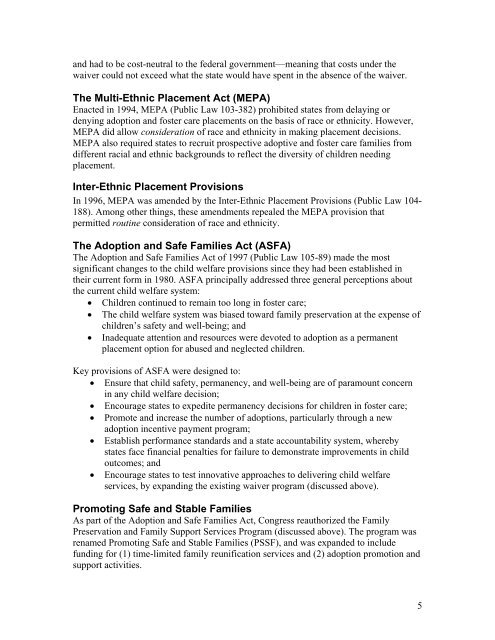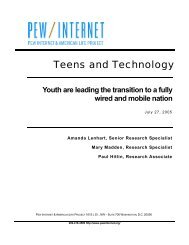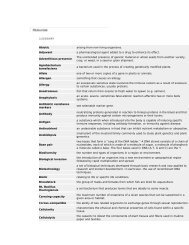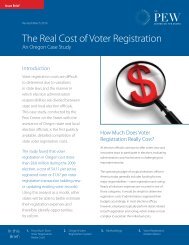Report: A Brief Legislative History of the Child Welfare System
Report: A Brief Legislative History of the Child Welfare System
Report: A Brief Legislative History of the Child Welfare System
Create successful ePaper yourself
Turn your PDF publications into a flip-book with our unique Google optimized e-Paper software.
and had to be cost-neutral to <strong>the</strong> federal government—meaning that costs under <strong>the</strong><br />
waiver could not exceed what <strong>the</strong> state would have spent in <strong>the</strong> absence <strong>of</strong> <strong>the</strong> waiver.<br />
The Multi-Ethnic Placement Act (MEPA)<br />
Enacted in 1994, MEPA (Public Law 103-382) prohibited states from delaying or<br />
denying adoption and foster care placements on <strong>the</strong> basis <strong>of</strong> race or ethnicity. However,<br />
MEPA did allow consideration <strong>of</strong> race and ethnicity in making placement decisions.<br />
MEPA also required states to recruit prospective adoptive and foster care families from<br />
different racial and ethnic backgrounds to reflect <strong>the</strong> diversity <strong>of</strong> children needing<br />
placement.<br />
Inter-Ethnic Placement Provisions<br />
In 1996, MEPA was amended by <strong>the</strong> Inter-Ethnic Placement Provisions (Public Law 104-<br />
188). Among o<strong>the</strong>r things, <strong>the</strong>se amendments repealed <strong>the</strong> MEPA provision that<br />
permitted routine consideration <strong>of</strong> race and ethnicity.<br />
The Adoption and Safe Families Act (ASFA)<br />
The Adoption and Safe Families Act <strong>of</strong> 1997 (Public Law 105-89) made <strong>the</strong> most<br />
significant changes to <strong>the</strong> child welfare provisions since <strong>the</strong>y had been established in<br />
<strong>the</strong>ir current form in 1980. ASFA principally addressed three general perceptions about<br />
<strong>the</strong> current child welfare system:<br />
• <strong>Child</strong>ren continued to remain too long in foster care;<br />
• The child welfare system was biased toward family preservation at <strong>the</strong> expense <strong>of</strong><br />
children’s safety and well-being; and<br />
• Inadequate attention and resources were devoted to adoption as a permanent<br />
placement option for abused and neglected children.<br />
Key provisions <strong>of</strong> ASFA were designed to:<br />
• Ensure that child safety, permanency, and well-being are <strong>of</strong> paramount concern<br />
in any child welfare decision;<br />
• Encourage states to expedite permanency decisions for children in foster care;<br />
• Promote and increase <strong>the</strong> number <strong>of</strong> adoptions, particularly through a new<br />
adoption incentive payment program;<br />
• Establish performance standards and a state accountability system, whereby<br />
states face financial penalties for failure to demonstrate improvements in child<br />
outcomes; and<br />
• Encourage states to test innovative approaches to delivering child welfare<br />
services, by expanding <strong>the</strong> existing waiver program (discussed above).<br />
Promoting Safe and Stable Families<br />
As part <strong>of</strong> <strong>the</strong> Adoption and Safe Families Act, Congress reauthorized <strong>the</strong> Family<br />
Preservation and Family Support Services Program (discussed above). The program was<br />
renamed Promoting Safe and Stable Families (PSSF), and was expanded to include<br />
funding for (1) time-limited family reunification services and (2) adoption promotion and<br />
support activities.<br />
5
















